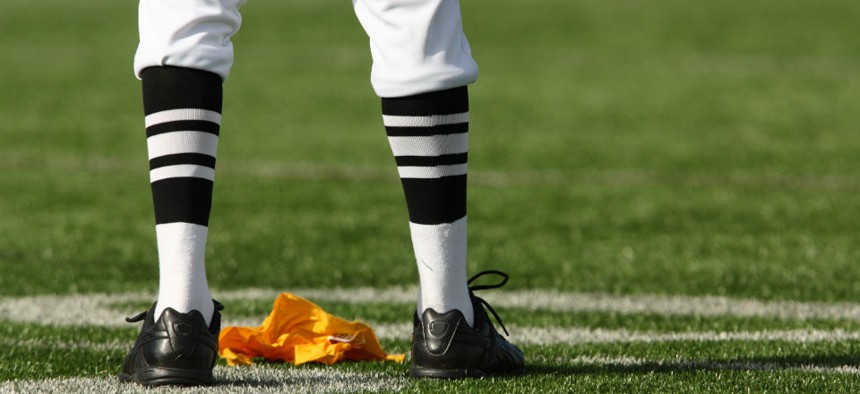
fstockfoto/Shutterstock
What Leaders Must Learn From the NFL Fiasco
The dangers of hubris, the need for transparency and the challenges of becoming huge in a short time.
The speed and volume of the emerging fiasco facing the NFL has been breathtaking. In the first football weekend after the league’s response to the video of Ray Rice punching his fiancée, there were players with similar charges against them scheduled to play on Sunday. One was pulled just before game time; the other played.
The Vikings’ Adrian Peterson was suspended for Sunday’s game because he was indicted for child abuse a couple of days earlier. After the Patriots beat the Vikings soundly without their star running back in the game, the team reinstated Peterson for this week’s game. Then Radisson, one of their corporate sponsors, suspended their support. At 1:30 a.m. the following morning, the team suspended Peterson again.
Meanwhile, a star player with the Arizona Cardinals has been arrested for domestic abuse, the NFL has recruited four prominent women to advise them on how to move forward and Tuesday night they staged a fashion show in New York complete with models from Victoria’s Secret to promote their new line of women’s apparel.
Really?
There are so many things that leaders can learn from this fiasco. The dangers of hubris, the need for transparency in the age of social media, the challenges of becoming huge in a relatively short amount of time all come to mind. All good lessons for sure but there is one lesson that I think leaders must learn and take to heart from the events of the past couple of weeks. It’s the requirement that leaders and their organizations be consistent.
Consistency, or more accurately, inconsistency lies at the heart of the NFL’s problems. Over the years, Commissioner Roger Goodell has been inconsistent in the way he’s administered discipline in the league. Small infractions have gotten large penalties while large infractions have gotten small ones. Owners and managers with transgressions have been handled differently than players with transgressions. Some people have the hammer dropped on them and others don’t.
Up until now expectations and the consequences for not meeting them have been inconsistently applied across the NFL’s 32 teams. Some players in trouble with the law play and others don’t. It all just seems to depend.
The upshot of all this is that when a crisis develops the leadership in the league office and in the management of teams with players in trouble is seen as flailing and grasping for a life raft. The cynicism and frustration on the part of fans, partners and sponsors rises as a result.
Consistency could have helped prevent all of this. People want to know what to expect of leaders and the organizations that follow them.
What else do you think leaders should learn from the mess in the NFL?
(Image via fstockfoto/Shutterstock.com)
NEXT STORY: Why Presidents Are Also Celebrities







